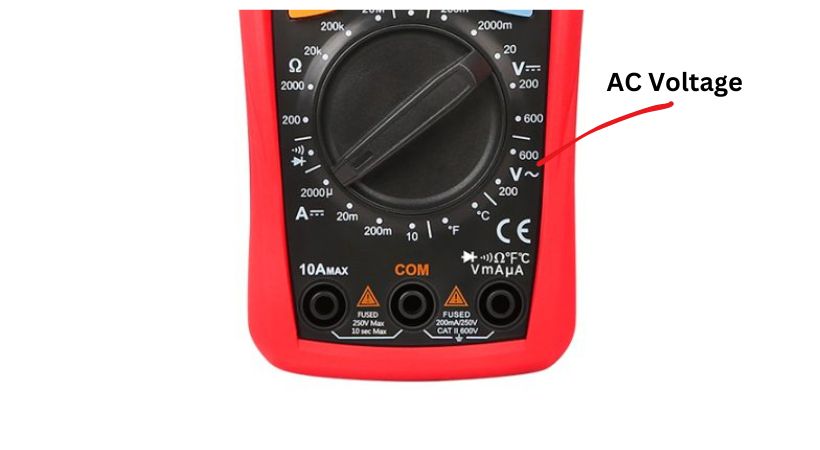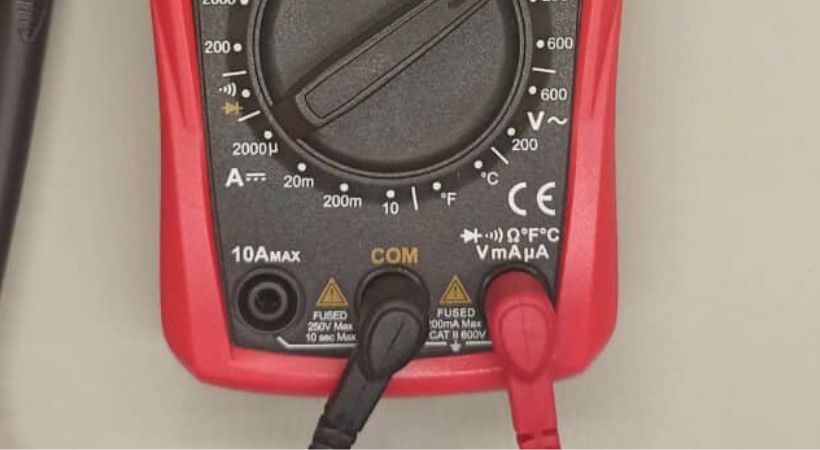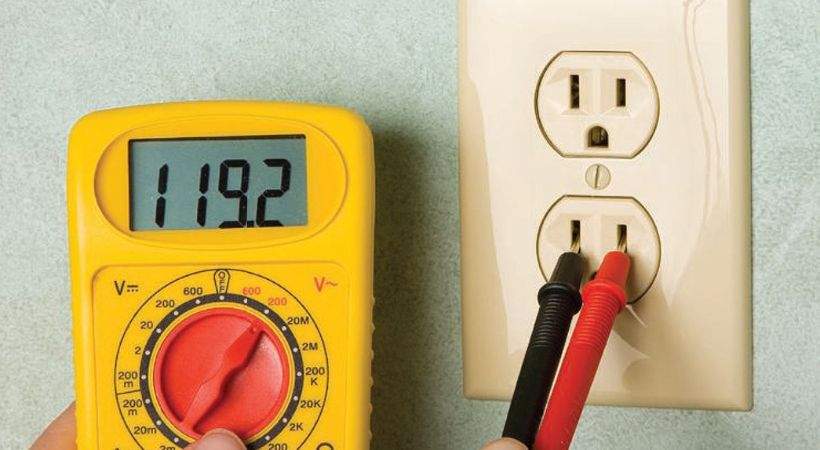AC voltage measurement (Guide, 2025)
In electronic design and power distribution systems, AC voltage plays a pivotal role. To detect problems like voltage spikes, surges, and other disturbances the measurement of the AC voltage is crucial.
The measurement of AC voltage is more complex since it oscillates in a sinusoidal manner compared to DC voltage, which stays constant throughout time. The multimeter is a tool used to measure the AC voltage. Select the AC voltage measurement mode on the multimeter and connect the meter probes to the point of the circuit where you want to measure the AC voltage. Apart from a multimeter, you can also use a clamp meter.
In this article, we’ll discuss AC voltage measurement to make your measurement process easy.
AC voltage measurement
AC stands for alternating current, which is a type of electrical current where the flow of electric charge periodically reverses direction.
In an AC circuit, the voltage alternates between positive and negative polarity over time, creating a sinusoidal waveform.
This alternating flow of electric charge is commonly used in households and industrial settings for powering various devices and appliances.
The amplitude, frequency, and phase typically describe the AC voltage. The amplitude which is also called peak voltage represents the maximum voltage reached in one direction, while frequency indicates how many times the voltage changes direction per second (measured in Hertz).
The phase refers to the relative timing of the voltage waveform compared to a reference waveform.
For designing, operating, and maintaining electrical systems effectively the understanding of AC voltage and its measurement is essential.
This was all about some basics of AC voltage. Let’s talk about what is meant by AC voltage measurement and how can you measure it.
AC voltage is the measure of the potential difference between two points in a circuit where the direction of current flow periodically reverses over time, following a sinusoidal waveform.
In practical terms, AC voltage measurement involves using instruments such as multimeters, oscilloscopes, clamp meters, or power quality analyzers to accurately determine the voltage levels present in an AC circuit.
The multimeter is one of the most versatile and easy-to-use tools used to measure voltage, current, resistance, and capacitance. Different types of multimeters are available in the market such as analog and digital.
If you want to learn about the multimeter basic here is our detailed article
Let’s discuss how can you measure AC voltage using a multimeter.
Safety precaution
Before going into the details of the measurement process let’s see what are the safety measurements for measuring AC voltage as the AC voltages are typically very high.
Here are some important precautions to consider:
- Wear appropriate personal protective equipment (PPE), such as insulated gloves and safety glasses, especially when working on live circuits.
- Choose the appropriate voltage range on the multimeter that is higher than the expected voltage in the circuit.
- Double-check the test leads connection to the multimeter and also check if the leads are securely connected to the correct terminals or points in the circuit.
- Do not touch the tips of test probes with your fingers.
- Make sure you also do not connect or touch the testing probes with each other.
These are some safety precautions and by adhering to these technical precautions, you can minimize risks, ensure accurate measurements, and maintain safety while measuring AC voltage using a multimeter.
Step by step guide
Here is the detailed procedure for measuring AC voltage using a multimeter.
1. Set the multimeter
The first and easiest step is to turn on your multimeter and set it to the AC voltage measurement mode. This is usually denoted by a “V” with a wavy line (~) above it, indicating AC voltage.

On most multimeters, you can rotate the selector dial to choose the appropriate voltage range for your measurement.
2. Insert the test probes
Now insert the testing probes or leads. The multimeter typically has red and black probes.

Insert the black test lead (negative) into the COM (common) port and the red test lead (positive) into the VΩmA (voltage, ohms, milliamp) port on your multimeter.
3. Choose the range
Determine the expected range of the multimeter if you are using a manual range multimeter.
Select a voltage range on the multimeter that is higher than the expected voltage to ensure accurate measurement. For example, if you expect the voltage to be around 120 volts, you might choose the 200-volt range.
You can skip this step if you have an auto-range multimeter as it picks the range automatically. Some digital multimeters offer both auto and manual range features.
4. Connect the test probes
It’s time to connect the probes to measure AC voltage. Carefully connect the multimeter test leads to the points in the circuit or socket where you want to measure the AC voltage.

The black lead should be connected to the common or ground reference point, while the red lead should be connected to the point where you want to measure the voltage.
Keep in mind to always connect the black probe first and the red second.
5. Verify the connections
Check and verify the probe’s connection to the circuit points. Make sure that they are connected in the right way and are securely connected to the appropriate terminals or points in the circuit.
6. Take the measurements
Once the test probes are connected securely, see the multimeter display. The multimeter will show the measured AC voltage in volts.
If the value is within the range the multimeter will display stable reading. If the voltage exceeds the selected range, you may need to switch to a higher voltage range to get an accurate measurement.
7. Note the measurements
Note down the AC voltage measurement displayed on the multimeter screen.
Take multiple measurements at different points in the circuit if necessary, especially if you’re troubleshooting or verifying voltage levels across components.
By following these steps, you can accurately measure AC voltage using a multimeter, ensuring safe and effective troubleshooting and testing of electrical circuits.
Conclusion
AC voltage measurement is a fundamental aspect of electrical engineering, enabling the characterization, monitoring, and control of AC power systems and electronic circuits.
AC voltage refers to the potential difference between two points that is changing its polarity periodically with time. We can measure the AC voltage using a multimeter.
The multimeter is the tool used for various measurements and testing of different components. It offers both AC and DC voltage measurement options.
All you have to do is turn the dial of the multimeter to the AC voltage measurement mode, select the range, and connect the probes to the multimeter.
After connecting the probes to the multimeter, connect the probes to the point where you want to find the voltage. Always connect the black probe first and the red probe second.
The multimeter will display the measured voltage after the probe connections. Take safety precautions like not touching the tips of probes with your fingers and don’t connect these.
By analyzing the AC voltage you can troubleshoot electrical systems, I hope this article will be helpful.
Thank you and have a blessed life…
Other useful posts:
